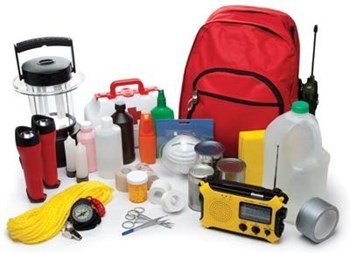
People living along the Gulf Coast have long accepted hurricanes as a fact of life—one that brings with it torrential rain, howling winds, and devastating hailstorms. The Mid-Atlantic has been hit with a few big storms over the past two centuries—some of which caused major damage and even death—but historically, most of us here in New York haven't considered ourselves to be residents of 'hurricane country.' That nonchalance changed in 2012 with the impact of Superstorm Sandy. With billions of dollars in damaged and destroyed property, thousands of displaced residents, power outages affecting hundreds of thousands for days on end, and loss of human life, that epic weather event was unlike anything most New York natives had ever experienced.
“Forty-three New Yorkers lost their lives” to Sandy, Mayor Michael R. Bloomberg said in the 2013 State of the City address, “and it's up to us to do all we can to prevent that from happening again. After the storm passed, it was clear that the houses and businesses most damaged by Hurricane Sandy were built decades ago, while those that were built in the last few years, or are now being built, held up pretty well. That was no accident.”
With all indicators pointing to the likelihood of more and bigger storms in the coming years, it's crucial for managers, boards, and residents of the city's multifamily buildings to take steps to keep both people and property as safe as possible when the inevitable strikes. Property managers and boards must develop and implement intelligent, workable storm preparation and evacuation strategies, and residents must be aware of those strategies. It’s easier said than done.
Big Apple, Big Weather
While the geography of cities like New Orleans, Los Angeles, and San Francisco make them susceptible to natural disasters and catastrophic weather events, New York’s historical dark days have generally had man-made origins: fires, gas explosions, blackouts, and of course, terrorist attacks. But there is “weather” in the Big Apple, too.
In 1821, the Norfolk and Long Island Hurricane, now thought to be a Category 3 storm, made landfall at Jamaica Bay. The storm surged 13 feet in just one hour, and much of Manhattan south of Canal Street was flooded. Despite being the only hurricane to make a direct hit in the nation’s largest city, few deaths were reported.
The so-called “White Hurricane”—the Great Blizzard of 1888—wreaked havoc on the East Coast, including New York. Temperatures plummeted an astonishing 60 degrees, two feet of snow fell, and powerful winds created snow drifts 20 feet deep. (This was only a few months after the Schoolhouse Blizzard in Ohio prompted then-president Ulysses S. Grant to re-establish the National Weather Service as a civilian operation, as Nate Silver relates in The Signal and the Noise.) Between the five boroughs, 400 people died.
The heat wave of August 1896 brought scorching temperatures for more than a week. Sunset brought no relief―the temperature never dipped below 90 for nine consecutive days. The dead air and oppressive humidity, combined with the stifling living conditions in the tenement houses on the Lower East Side contributed to 420 deaths.
Nineteen people died in a heavy rainstorm in 1937 when a tenement building in New Brighton collapsed. A year later, the New England Hurricane of ‘38 made landfall in Long Island, killing ten people in New York and knocking out the power.
In December of 1992, a nor’easter ravaged the Eastern seaboard, flooding the low-lying areas of the city. Tropical Storm Irene struck in 2011. But even after all that, Superstorm Sandy became the most damaging weather event in the city’s history.
Ready for the Next 'Big One'
“Sandy raised the bar,” Bloomberg said, “and now we must rise to the occasion. This year, we'll develop a long-term plan so that when extreme weather hits...we'll be able to get the lights back on quickly and ensure that the heat keeps working, the gas stations stay open, the hospitals maintain power and the transportation system keeps operating.”
Leading the mayor’s effort in this initiative is Seth Pinsky, president of the New York City Economic Development Corporation. According to Bloomberg, Pinsky will deliver a report on how to protect the city from extreme weather events by Memorial Day—but this was before press time. In a March 28 speech to the Lower Manhattan Marketing Association, however, he hinted at what his proposals might involve.
“We are not going to climate-proof New York City,” he said. “That would be impossible, and it would be folly to claim that that is our goal. But what we do believe is that through a multi-layered approach we can reduce the impact of climate change, and we can ensure that where we do get impacted, we are able to bounce back faster.”
Part of the problem is that, due to climate change, the incidence of “100-year storms” has become more frequent than once in a century. Maps prepared by FEMA in 1983 designating potential flood zones for a once-in-a-100-year event covered just 260,000 of the city’s 8 million residents, and a mere 36,000 buildings. When Sandy struck, more than half of the buildings hit were beyond the borders drawn by FEMA.
“New York City has always been vulnerable to coastal flooding,” Pinsky explained in his speech, “but what Sandy and the new flood maps from FEMA show is that our vulnerability is actually greater than we had understood.”
The threat of coastal flooding will only increase in the coming decades, as the Arctic ice caps continue to melt. The New York City Panel on Climate Change, a group of professors at various area universities gathered by Mayor Bloomberg, predicted that the sea level would rise at least two and as much as ten inches in the next 15 years. Fifty years from now, the ocean might be a foot, or even two feet, higher than it is today. Even so, there are other factors to consider besides the FEMA flood maps, Pinksy said. “They don’t take into account things like sea level rise or the future intensity of storms. The flood maps also don’t show us things like what happens when you have frequent downpours, which have an impact on our reservoirs and water supply, which have an impact on our infrastructure. They don’t talk about things like heat waves, which actually kill more people in the United States each year than any other natural phenomenon. And they don’t tell you about things like drought.”
Any New Yorkers who were not aware of the potential impact by a major storm three years ago are certainly aware of it now, after what happened in Staten Island and the Rockaways in Sandy’s wake. But board members and property managers have more exigent matters to attend to than preparing for a phantom hurricane that may or may not strike. Unless your building is in one of the worst-hit areas, it’s an easy potential outcome to ignore.
Even during Sandy, “the Upper East Side, the well-to-do, had no problems whatsoever,” says Jacqueline Watkins Slifka, a longtime resident of that neighborhood, the founder of the Community Coalition for Emergency Preparedness, and perhaps the city’s most dedicated civilian in the area of emergency management. “They still don’t have an idea of what a real disaster is.”
For years, Slifka has been a sort of Cassandra, forecasting extreme weather events to come and too often being ignored. After Irene, she went around hanging up fliers that asked, “What would you do in an emergency? Do you want to know where your nearest shelter is?” and provided a number—hers—to call for more information. “One person called!” she says, exasperated.
So what can a building do? Prepare for the worst. “Your building should be able to be self-sufficient for a week to 10 days,” she says, “without city help, and without federal help.” She encourages board members to come to meetings of her organization, to learn about what’s being done and what can be done. The two most important things to do, she advises, are to make sure the building has a water supply in the event that the municipal water is not working, and to ensure that the building has an internal communications system that will function without power.
Much of emergency preparedness is about communication—where to go for good news, how to relay information to residents of the building, and so forth. Although she meets regularly with board presidents, Slifka reports that few are active in preparing for disaster. Even spending an hour formulating a plan is better than waiting until it’s too late.
Because, while it may take another 100 years for a hurricane to wreak as much havoc as Sandy wrought, the odds are stacked in Mother Nature’s favor. Someday, everyone will need a response plan. Bloomberg and Pinsky and activists like Slifka are already thinking along those lines. You should, too.
Greg Olear is a freelance writer and a frequent contributor to The Cooperator.






Leave a Comment